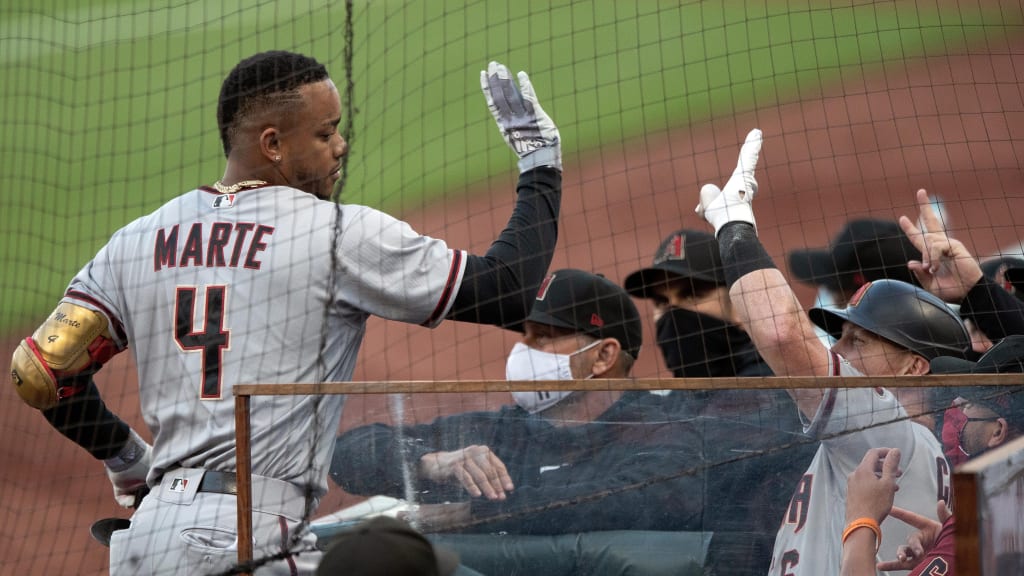
The 2020 season may be over for the D-backs, but their front office’s work has only just begun.
Expected to compete for a postseason berth in 2020, the D-backs instead finished last in the National League West with a 25-35 mark and left them with plenty to sort out over the winter.
Here’s a look at the five main questions facing the D-backs this offseason:
1. Where does Ketel Marte play in 2021?
This was the big question heading into last offseason as well, and it was only answered after the D-backs acquired center fielder Starling Marte from the Pirates.
Trading Starling Marte to the Marlins at the Deadline this year leaves the D-backs with a hole in the middle of their outfield.
Ketel Marte would seem to be a natural choice given how well he played the position in 2019. Plus, the D-backs have a lot of options at second base, including shifting Eduardo Escobar over from third or relying on Josh Rojas, Josh VanMeter, or No. 17 prospect Andy Young.
The options in center are a little more limited, but one of Arizona's former top prospects, Daulton Varsho (a catcher by trade), spent more time in center (14 games) than he did behind the plate (10) this year after his big league callup on July 30. It’s a relatively new position for Varsho, so he had some struggles out there, but he could be an option.
2. How do they interpret 2020?
Every team in Major League Baseball has to grapple with the question of how much should be decided about its roster after a 60-game sprint as opposed to a 162-game marathon.
For the D-backs, the rollercoaster nature of the season makes their evaluation that much tougher.
After beating the A’s, 10-1, on Aug. 18, the D-backs were 13-11 and held a postseason spot in the National League. They would go on to lose 18 of their next 20 games and fall out of contention before finishing the season on a 10-6 run.
In the middle of the 2-18 stretch, general manager Mike Hazen made the difficult decision to trade away key veterans Marte, closer Archie Bradley and left-hander Robbie Ray in an attempt to save some money, but more important, to collect pieces for 2021 and beyond.
When the season ended, though, Hazen was still wrestling with whether it was just a small sample size or a reflection of where his team stood.
3. How do they fix the offense?
Arizona’s offense was filled with players who underperformed relative to expectations and took most of the blame for the 2-18 slump.
The D-backs faced similar issues in 2018 and ’19, as the offense faltered for prolonged periods at crucial times, costing them a chance to play in the postseason.
“We need to do a better job of night-to-night consistency, and that is going to be a continued area of focus for us going into the offseason,” Hazen said.
While part of that requires better approaches at the plate, some of it also depends on the way the roster is constructed. With 2020’s primary starter at just about every position returning next year, it will be interesting to see if Hazen decides to change the mix via trade, free agency, or both.
4. How do they improve the bullpen?
The D-backs thought they had bolstered the back end of their bullpen for 2020 when they signed right-handed free agents Héctor Rondón and Junior Guerra last offseason, but both struggled.
The team declined options on both Rondón ($4 million/$500,000 buyout) and Guerra ($3.5 million/$100,000 buyout).
With the economic uncertainty around the industry, there’s a belief that a lot of players could be non-tendered, including many relievers. The D-backs will present an attractive landing spot in part because they don’t have an established closer and can offer a free agent the chance to compete for the position.
Hazen has tended to rebuild his bullpens on a year-to-year basis anyway, so this won’t be much different. In fact, Arizona may have more options to choose from after the non-tender date than usual.
5. What will the budget be?
D-backs team president/CEO Derrick Hall said during the final week of the season that the club was unsure of its budget for 2021 because of the uncertainty of how COVID-19 will impact attendance.
“We’re having to plan for different scenarios of revenue, different scenarios of attendance,” Hall said. “Smaller, minimal crowds, no crowds, no restrictions and what that looks like. It’s going to take some time before we know exactly what that direction will be and what the payroll will look like.”
Arizona had a projected 2020 Opening Day payroll of around $120 million during Spring Training, and Hall said it was “far-fetched” to think 2021’s will be at that level.
With Yasmany Tomás, Ray, Jake Lamb and Marte’s salaries off the books next year, the D-backs will have some flexibility, but how much depends on what the budget looks like.
